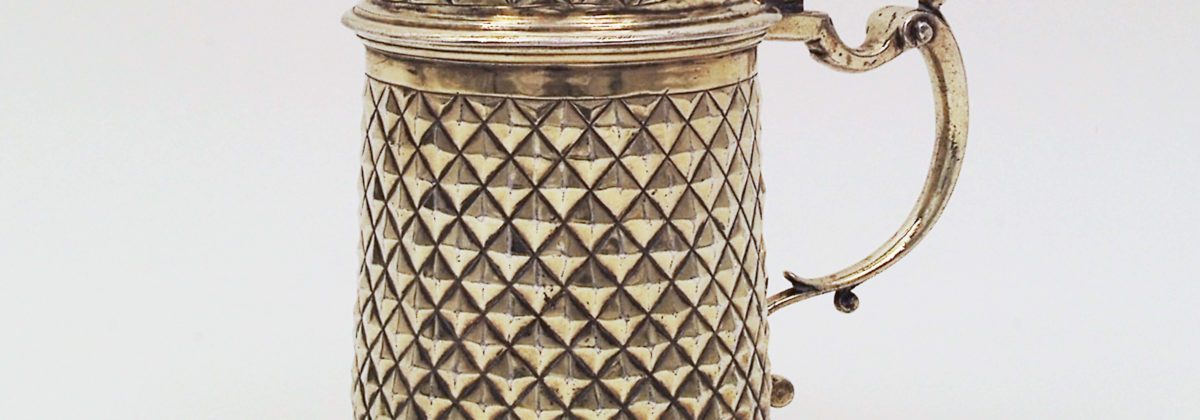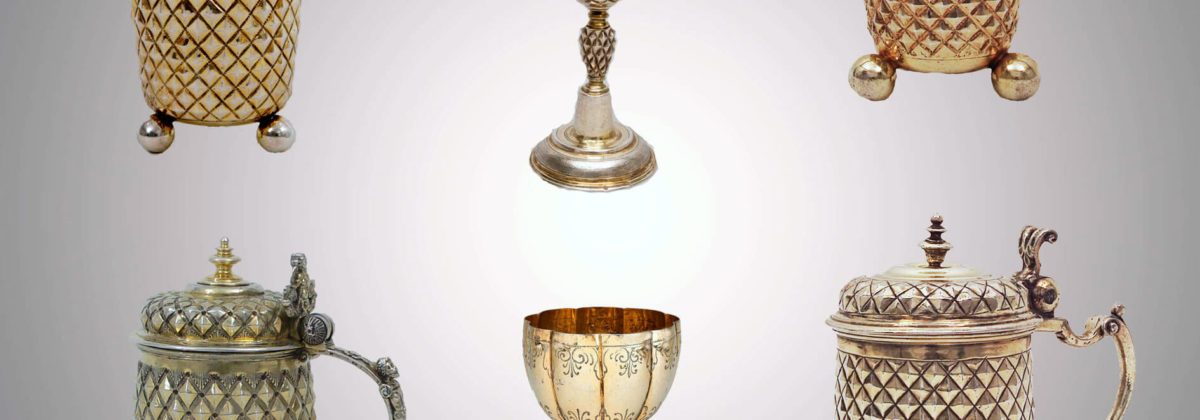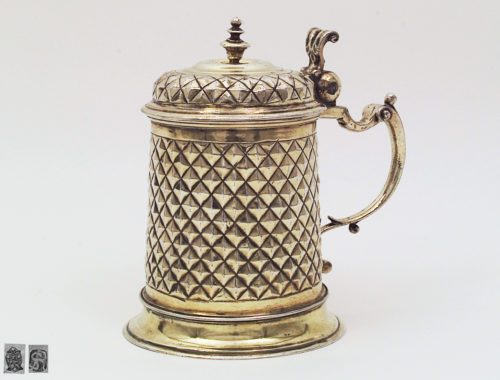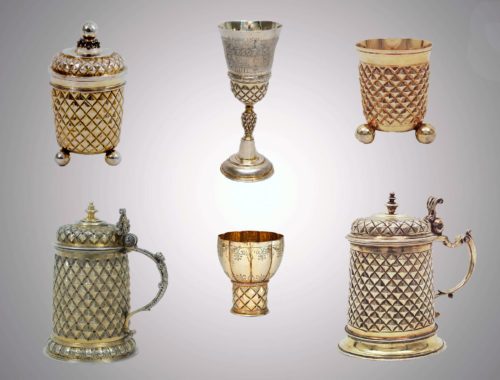Detaillierte Informationen
Important silver-gilt tankard with diamond-cut decor.
The presented silver-gilt tankard is decorated with a masterfully executed diamond-cut decoration and is a fine example for the early baroque period in Augsburg.
Above a slightly flared foot ring rises a cylindrical, slightly conical corpus with a rocaille handle attached to the side. The thumb rest is shaped as a volute. The flat vaulted lid with a central baluster knob is also decorated with a embossed diamond buckle decor. On the lid, next to the baluster knob and on the bottom (outside) are perfectly preserved marks.
The tankard as a drinking vessel
Originally, tankards were used for liturgical purposes. As a luxury drinking vessel for beer it found its way into profane use during the Renaissance. Beer was drunk warm at that time, due to this, the tankards always have a lid.
Not only on the table these tankards were used, they were also presented on the buffet to represent the wealth of their owners, they also often served as courtly gifts.
Drinking vessels with diamond decoration
The tankard in its basic form is a particularly beautiful object of table culture in southern Germany in the second half of the 17th century. The finely faceted exterior also represents a special type of Baroque ornamentation.
inspiration in the Renaissance architecture. In Italy, for example, stones in diamond-cut were used for rustication (a special type of façade decoration). The surface of the stone on a square façade is formed like a half-octahedron. In the case of a rectangular shape, this creates a clear edge in the middle. The name of this decoration The diamond-cut decoration (also called diamond buckle decoration) found its comes from the similarity of a shaped diamond, which is grinded into this form.
Provenance
Rudolf Neumeister Collection
Master
Salomon II Rittel was born around 1580 and became master around 1608. The goldsmith died in 1649.
Literature
Jürgen Christern, ‘Diamantquader’, in: Reallexikon zur Deutschen Kunstgeschichte, Vol. III (1954), p. 1424-1429.





